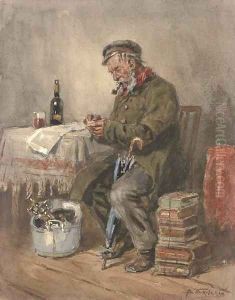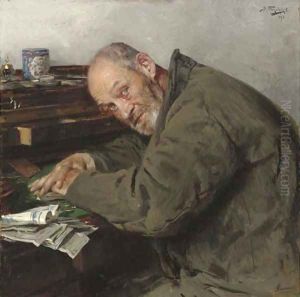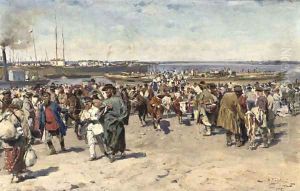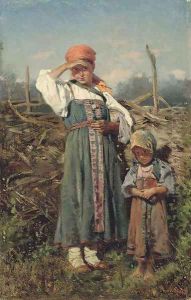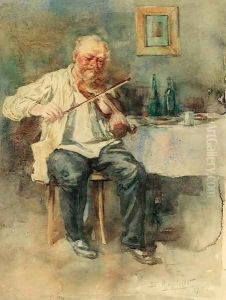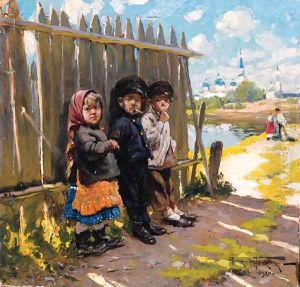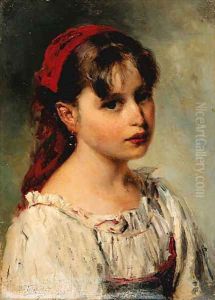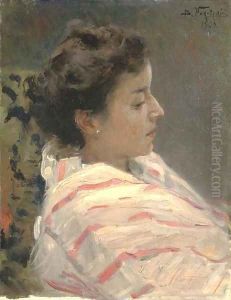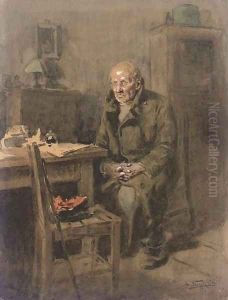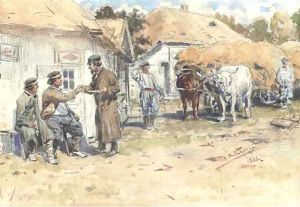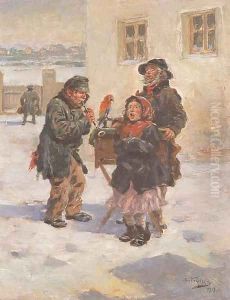Vladimir Egorovich Makovskii Paintings
Vladimir Egorovich Makovsky was a Russian realist artist known for his social commentary and detailed portrayal of life in Russia during the 19th century. Born into the Makovsky family of artists on February 26, 1846, in Moscow, Russia, Vladimir was surrounded by art and culture from a young age. His father, Egor Ivanovich Makovsky, was a noted Russian art collector and his mother, Elena Fedorovna Makovskaya, was a talented musician. This environment nurtured his artistic talents, leading him to enroll at the Moscow School of Painting, Sculpture and Architecture when he was only twelve years old.
Throughout his career, Makovsky was deeply influenced by the social movements of his time, particularly by the plight of the poor and the working class in Russia. His paintings often depicted the struggles and injustices faced by these groups, earning him a reputation as a painter of the people. His work was characterized by its narrative depth, emotional resonance, and attention to detail, qualities that made his paintings highly popular and respected among his contemporaries.
Makovsky was also a member of the Peredvizhniki (The Wanderers or The Itinerants), a group of Russian realist artists who sought to break away from the traditional academic art scene in Russia and bring art closer to the people. Through his association with the Peredvizhniki, Makovsky participated in their traveling exhibitions, which aimed to make art accessible to the wider public, especially those living in rural areas of Russia.
Despite his focus on social themes, Makovsky's work was not limited to grim depictions of poverty and injustice. He also painted scenes of Russian domestic life, celebrations, and portraits, showcasing the beauty and complexity of Russian culture and society. His ability to capture the spirit of his time, combined with his technical skill, made him one of the leading artists of his generation.
Vladimir Egorovich Makovsky's contributions to Russian art were recognized during his lifetime, and he was awarded numerous honors, including the title of Academician by the Russian Academy of Arts. He continued to paint and exhibit his work until his death on February 21, 1920, in Petrograd (now St. Petersburg), Russia. Today, his paintings are held in high regard and can be found in museums and private collections around the world, serving as a poignant reminder of Russia's rich cultural heritage and the power of art to reflect and critique society.
